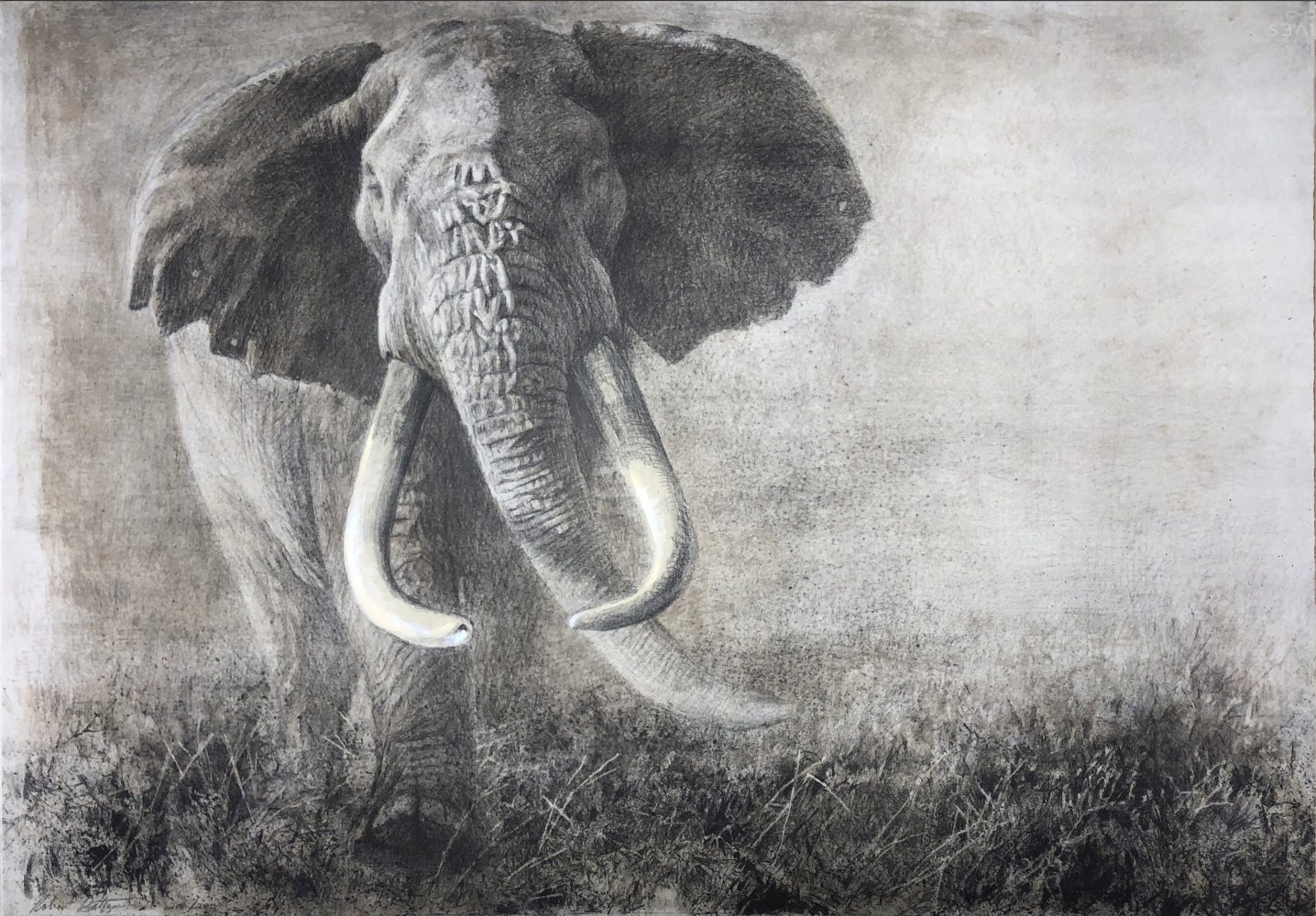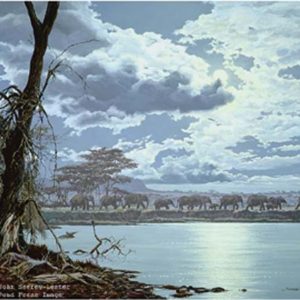Description
Homage to Ahmed – 29-3/8 x 41-1/4; Original Lithograph; Edition Size 290; $4950.00 U.S.
“Ahmed was the last of the great large tuskers. He lived in Kenya and was protected as a symbol of Kenyan wildlife by special presidential decree. Ahmed was guarded by two armed rangers 24 hours a day, from 1970 until he died in 1974. He was not gigantic, but it wasn’t necessarily the largest or the oldest of the male elephants that had the largest tusks — the great tuskers simply had it in their genes.
Ahmed is walking — nearly striding — looking mature and handsome, with his curved tusks gleaming. My intention was not to be threatening; Ahmed is not charging. His tusks are down, and they are very, very big. As an artist, I found the most interesting aspect of the image to be the treatment of the wrinkles at the center of his face, between his eyes and below his forehead between his tusks.
…
“Homage to Ahmed” was created to raise funds to help combat ivory poaching. This is more a picture about ivory than it is about an elephant. It is part of the sad commentary on man’s interference with the world that these great large tuskers were selectively hunted for centuries, both by collectors and trophy shooters. As the largest tusks were preferred, such hunting hastened the elimination of large tusk genes from the breeding pool. This was the end of an historic phenomenon that has occurred since elephants have been around — millions of years. No more great tuskers will be produced on Earth.
I wanted this picture to be large and impressive and confrontational because it is about that kind of issue — the ivory trade. In 1980, there were 70,000 elephants in Kenya. Now there are fewer than 16,000. The demand for ivory on the international market had a resurgence in 1970, when the price of ivory increased. By the late 1970’s, thousands of elephants have been slaughtered for trinkets – jewellery, piano keys, billiard balls – decorative items that sit on the shelf or the mantel and collect dust. It doesn’t seem to me to be a cause worthy of the destruction of such a beautiful animal. We have to hope that people will simply stop buying ivory, especially in Far East countries where the ivory trade is the heaviest.” – Robert Bateman
Biography
Robert Bateman has been called the most famous living artist. He continues to paint and tour the world to promote conservation and preservation of nature. We have represented Robert Bateman for decades and are now the sole publisher and distributor of his reproductions. We are so honored to work with him and witness his success. He has made such a massive contribution to the art world and the natural world as an artist and educator of the earth’s most important resources.
Nature as a subject is becoming more and more popular as our environment is in peril. What better subject is there than the beautiful creatures we share this world with? Robert Bateman’s appreciation and understanding of nature are apparent in his paintings. He is able to paint flora and fauna the way your eye would perceive it in real life. It is important that the animal takes full attention. The background becomes muted, and therefore it doesn’t take too much focus away from the subject. His paintings seem effortless and masterful all at once.
Bateman’s eye for composition is unparalleled. Each painting is a composed like a symphony, leading the eye to wander. From the backyards of North America to the sprawling plains of Africa. Robert Bateman captures nature the way it should be enjoyed. Above all he is a champion of wildlife. For this reason he has become a household name for art collectors.


